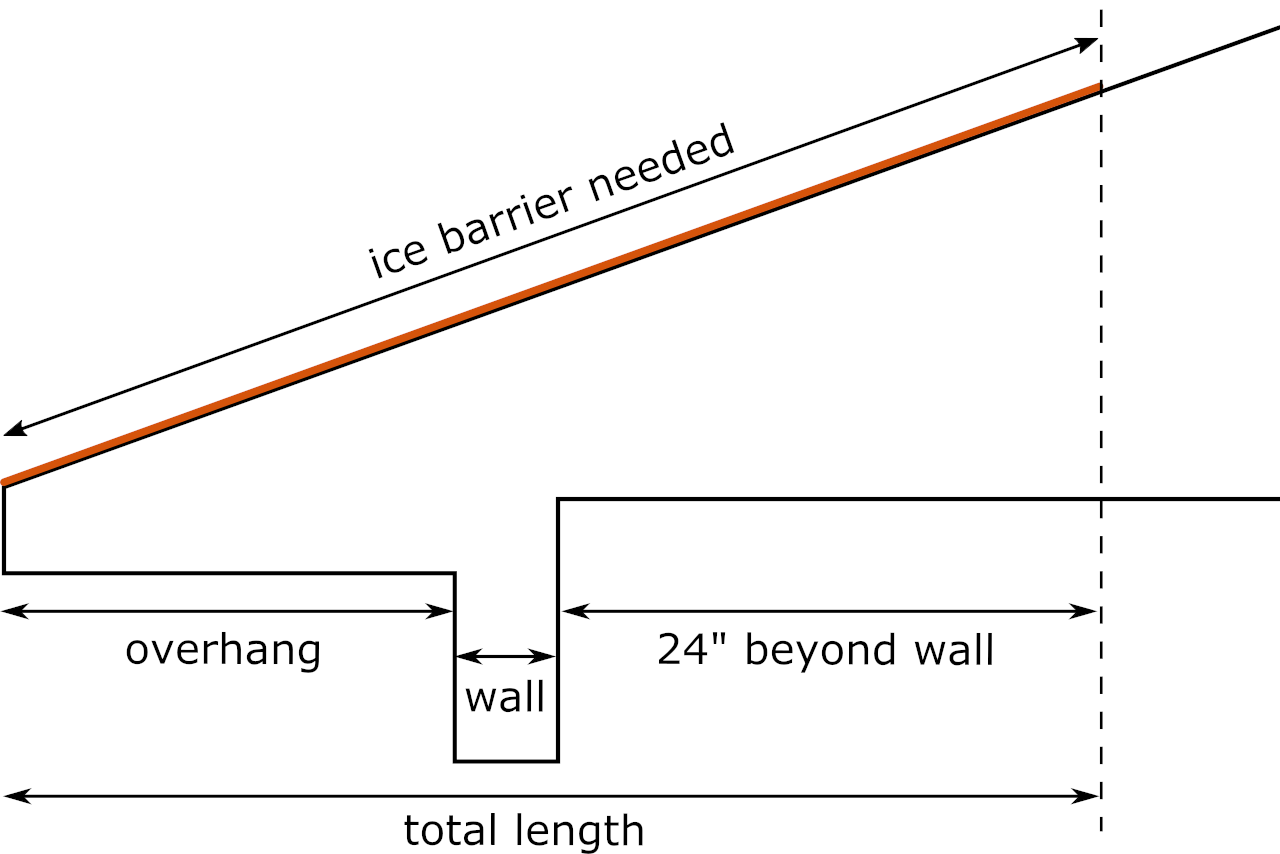Ice & Water Shield Calculator
Ice Barrier Estimate:
Required Coverage From Roof Edge: CFM
Estimated Ice & Water Shield Required: CFM
How to Calculate Ice Barrier Needed
Ice barrier membrane, sometimes called ice and water shield, is a self-adhesive membrane installed for protecting roof underlayment. It adds an additional barrier against ice and water being forced into an asphalt shingle roof when ice dams form or during high winds and driving rain.
In cold climates, an ice barrier is often required by local codes. For example, states such as Minnesota require that an ice barrier membrane is installed extending 24″ beyond the inside of the exterior wall.[1]

Most localities that require an ice barrier stipulate that it cover from the edge of the eave to 24″ beyond the inside of the exterior wall.
To calculate the ice and water barrier needed for a roof, you need to measure the roof pitch, overhang of the eaves, and thickness of the exterior wall.
Ice Barrier Formula
Once you have the roof pitch, eave overhang, and wall thickness, you can use the following
formula to calculate the coverage needed to protect 24″ beyond the exterior wall.
Most ice and water shield is sold in rolls that are 36″ in width and with varying lengths. The
36″ width ensures that it can cover the required or recommended amount on most roofs.
Once you calculate how far up the roof needs to be covered, you can calculate the total amount of
ice and water barrier needed by multiplying the coverage in feet by the length of the eaves that
need to be covered in feet.
total ice barrier required = ice barrier coverage × eave length
This will give you the amount of ice barrier square footage that is required. Because most rolls
are sold in 36″ widths, if you know that you will need 36″ or less in width, you can simply
measure the length of the area.
Typical roll lengths can range from 36′ to 75′. Simply find the total length that you need, and
you can calculate how many rolls to purchase based on their size.
However, if you need more than 36″ in width for coverage, then finding the square footage
required is a better method. You can find your width in inches if needed; take your length
measurement in inches as well. Multiply them both together and divide by 144 to get the square
footage.
Typical roll square footages are 108 sq. ft. to 225 sq. ft. If you are close to the total square
footage for a roll, you may want to purchase an additional roll. This is because you will need
to make several cuts in each roll to get the additional width needed, which means that you will
have a greater than average amount of waste, and may need additional product to finish the job.